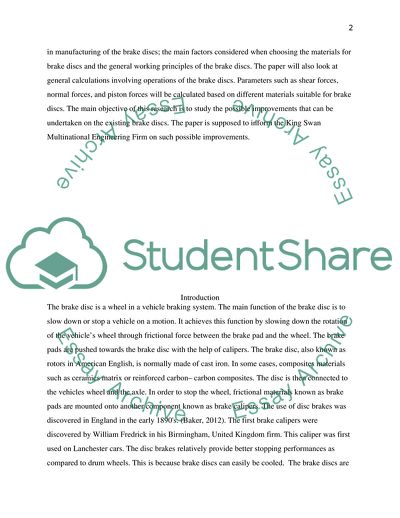Cite this document
(Materials and Manufacturing Process Selection: Brake Disc Design Case Study Example | Topics and Well Written Essays - 3250 words, n.d.)
Materials and Manufacturing Process Selection: Brake Disc Design Case Study Example | Topics and Well Written Essays - 3250 words. https://studentshare.org/engineering-and-construction/1871625-materials-manufacturing-process-selection
Materials and Manufacturing Process Selection: Brake Disc Design Case Study Example | Topics and Well Written Essays - 3250 words. https://studentshare.org/engineering-and-construction/1871625-materials-manufacturing-process-selection
(Materials and Manufacturing Process Selection: Brake Disc Design Case Study Example | Topics and Well Written Essays - 3250 Words)
Materials and Manufacturing Process Selection: Brake Disc Design Case Study Example | Topics and Well Written Essays - 3250 Words. https://studentshare.org/engineering-and-construction/1871625-materials-manufacturing-process-selection.
Materials and Manufacturing Process Selection: Brake Disc Design Case Study Example | Topics and Well Written Essays - 3250 Words. https://studentshare.org/engineering-and-construction/1871625-materials-manufacturing-process-selection.
“Materials and Manufacturing Process Selection: Brake Disc Design Case Study Example | Topics and Well Written Essays - 3250 Words”. https://studentshare.org/engineering-and-construction/1871625-materials-manufacturing-process-selection.


